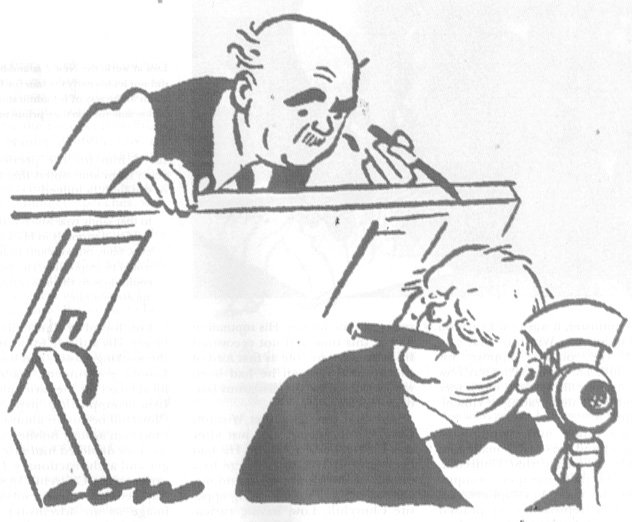Famous Caricatures in History and Pop Culture
Caricatures have long been a mirror to society. distorted, yes, but often revealing truths that polite conversation dares not touch. Whether it’s a bulbous-nosed politician in an 18th-century newspaper or an over-the-top animated celebrity sketch on late-night TV, caricatures entertain, provoke, and immortalize. In this blog, we’ll take a deep dive into the most iconic caricatures throughout history and modern pop culture, exploring how they've shaped public perception and endured the test of time.
What Makes a Caricature Famous?
Before we explore individual examples, it's important to understand why some caricatures stand out above the rest. A famous caricature is not just a funny or exaggerated drawing, it’s a moment in time. It captures a person, mood, or social climate so perfectly that it becomes inseparable from public memory. These caricatures don't just depict reality; they define it for generations.
1. Napoleon Bonaparte by James Gillray

Let’s start in the 18th century with James Gillray, the British caricaturist who’s often credited as one of the forefathers of modern political satire. His depictions of Napoleon Bonaparte were legendary. In particular, his print “The Plumb-pudding in danger” (1805), where Napoleon and British Prime Minister William Pitt carve up the world as a pudding, became one of the most enduring political cartoons ever made. Gillray’s exaggerated portrayal of Napoleon as a short, power-hungry megalomaniac helped cement the “Napoleon complex” in popular thought, even though Napoleon wasn't actually that short.
2. Winston Churchill by David Low

Jump ahead to the 20th century and we find Sir David Low, a New Zealand-born cartoonist working in Britain. His recurring depiction of Winston Churchill as a bulldog, tenacious, gruff, and unmistakably British, was not only visually iconic but symbolically powerful. During World War II, when morale was low, Low’s images helped craft Churchill’s public persona as the unwavering leader. Even today, the bulldog-Churchill fusion lives on in memes, statues, and parodies.
3. Richard Nixon by Herblock
Herbert Block, known by his pen name “Herblock,” spent over five decades at The Washington Post, carving up American politics with his pen. His caricature of Richard Nixon, with heavy jowls, a five o’clock shadow, and shifty eyes, became the visual shorthand for political distrust. Herblock didn’t just draw Nixon; he predicted and mirrored the growing unease around the man who would eventually resign in disgrace after the Watergate scandal. It’s hard to overstate how much Herblock’s pen influenced public opinion.
4. Marilyn Monroe by Al Hirschfeld
If political caricatures captured our anxieties, Al Hirschfeld captured our awe. The Broadway and Hollywood illustrator was famous for his elegant line art caricatures of celebrities. His drawing of Marilyn Monroe, voluptuous curves, flowing hair, half-lidded gaze, manages to exaggerate without mocking, to idolize without distorting. Hirschfeld’s genius was in capturing personality through simplicity, and his Monroe is every bit as legendary as any photograph of her.
5. The Beatles in “Yellow Submarine”
In 1968, The Beatles were immortalized in the psychedelic animated film Yellow Submarine. While not caricatures in the traditional ink-on-paper sense, their animated versions, long limbs, exaggerated facial features, whimsical fashion, were caricatures in spirit. They took each Beatle’s public persona and amplified it visually. John was the thinker, Paul the romantic, George the mystic, and Ringo the joker. These caricatures helped solidify their iconic roles in pop culture and contributed to their mythos as more than just musicians.
6. Barack Obama by Barry Blitt

Fast forward to the 2000s. Barry Blitt, working for The New Yorker, became known for his political caricatures that walked the fine line between satire and commentary. His 2008 cover illustration “The Politics of Fear,” showing Barack Obama in traditional Muslim garb and Michelle Obama dressed like a Black militant in the Oval Office, sparked controversy but also conversation. It was a critique of how the Obamas were being portrayed by right-wing media, not a reflection of the artist’s views. It showed how caricatures could serve as mirrors of media narratives, as well as commentaries on them.
7. Donald Trump by Practically Everyone
Few figures in recent history have been caricatured as relentlessly as Donald Trump. With his unmistakable hair, orange hue, pursed lips, and bombastic personality, Trump is a cartoonist’s dream. From Alec Baldwin’s exaggerated impersonation on Saturday Night Live to satirical depictions in newspapers, comics, and animated shows like The Simpsons and South Park, Trump became a visual metaphor for excess, ego, and chaos. What’s striking is how unified the world’s caricaturists became in their portrayal, almost all focused on the same features, giving the caricature almost mythological status.
8. Elon Musk in Pop Media
In recent years, Elon Musk has become another recurring figure in modern caricature. From fan art to critical editorial cartoons, Musk is often portrayed with a mix of Tony Stark futurism and Bond villain eccentricity. His frequent Twitter antics, space ambitions, and interviews make him ripe for caricature, not just visually, but conceptually. Some artists exaggerate his cold logic, others mock his tech utopianism, and many draw him riding a rocket or clutching a Dogecoin.
9. Satirical Shows: The Legacy of “Spitting Image”
In the UK, Spitting Image remains one of the most brutal and hilarious forms of caricature in modern media. This puppet-based show took grotesque visual exaggeration to new levels, long noses, bulging eyes, snarling mouths, all made of latex. From Margaret Thatcher to Ronald Reagan to modern-day royals, nobody was safe. And that was the point. These caricatures didn’t just mock, they dominated the cultural dialogue. The show's revival in recent years speaks to the enduring appetite for visual satire in a world flooded with political theater.